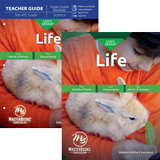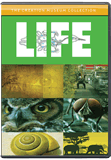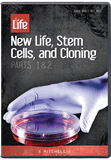Does Speciation = Evolution?
Other “Evidence for Evolution” Exhibits
on August 15, 2016Some museums show their lack of understanding of the biblical position when they claim that creationists believe in the “fixity of species,” that is, that all animals have remained unchanged since the beginning. However, this does not represent the creationist position.
We freely admit (based on information gleaned from the Bible) that God created the original animal and plant kinds with great genetic variation and that descendants of those original created kinds can vary greatly within their kind.
In most cases, a kind represents a group of animals that can mate with others in that group. It appears from ongoing creationist research that the created “kinds” were much larger genetic categories than the “species” designation that scientists use today. Except for mankind, each created kind was at the genus or even family level (perhaps higher in some cases) of modern taxonomic classification.
For example, lions, tigers, jaguars, and leopards are classified as different species, but are probably all members of an original cat kind. And donkeys, zebras, Thoroughbreds, and Arabian horses are probably all part of the original horse kind. Some have suggested that there may have been as few as 50 different dinosaur kinds (compared to the over 1,000 species and 500 genera that the evolutionists classify). For example, the ceratopsian kind might include triceratops, monoceratops, etc.
The representatives of each kind that survived the Flood had enough information in their DNA to produce the wide variety of animals that we see today. The varieties that we only see preserved in the fossil record came from the genetic potential in the DNA of the original created kinds.

Domestic dogs all belong to the same dog kind.
After erecting the false view, the museums may then proceed to knock down the “fixity of species” argument by showing that animals change over time, and that new species have been observed to arise. This, they claim, is evidence for molecules-to-man evolution. For example, the exhibits may feature varieties of weasels, rabbits, dogs, and cats. The signage then points out, “See, animals change. That’s evolution.”
When museums use evolution to mean both “change in features over time” and “the history of life on earth,” this is an example of equivocation or “bait-and-switch.” They are using examples of variation within one of the created kinds (as evidenced by a new species arising, for example) as proof of microbe-to-microbiologist change between different kinds.
Speciation can be defined as “the process of change in a population that produces distinct populations which rarely interbreed in nature due to geographic isolation or other factors.” This observable process (which, incidentally has been shown to happen much faster than evolutionists expected) fits into the category of operational science (not origins science). All informed creationists accept speciation as a fact of nature, but contend that this process cannot explain goo-to-you-via-the-zoo evolution.
The formation of a new species generally results in a loss of genetic information—the opposite type of change required by molecules-to-man evolution. As two populations of the same created kind become separated, genetic variation is diminished, resulting in the formation of a new species. But speciation has never been observed to turn one kind of animal into another kind. There is a limit to the amount of change a population can produce.
When small changes that arise as a result of the loss of information are used as evidence for molecules-to-man evolution, the equivocating switch has occurred. Be on the lookout for when museums do this in their signage.
For more information, visit www.answersingenesis.org/natural-selection/speciation/.
Related Media
Rapid Speciation
Related Downloads
Speciation—it can occur quickly!
Audio DownloadMuseum Guide
Are you exasperated by all the hype about "millions of years" in secular museums? The Museum Guide will help!
Browse Kids BookRecommended Resources
- © 2024 Answers in Genesis
- Privacy Policy
- Contact
- About




